Combine the gorgeous good looks and family-focused temperament of the Cocker Spaniel and the low-shed coat and intelligence of the Poodle, and what do you get? The irresistible, loving, loyal, smart Cockapoo, of course! These dogs are increasingly in demand as people start to see what wonderful pets they make. However, there is an assortment of Cockapoo colors and coat patterns, and it can be tough to know just which to opt for. Here we will help by providing a rundown of each of them so you have a better understanding of what to be on the lookout for and so can find the very best dog for you.
Cockapoo Colors: Background
As you might expect, Cockapoos inherit their coat color from their parents. However, that’s where it gets a little complicated for these Doods. While many dog breeds have a limited color range (which makes predictions far easier), both Poodles and Cocker Spaniels come in a veritable rainbow of hues. Pretty much every color found in the canine world pops up in these darling dogs.
Cocker Spaniel Colors
According to the American Kennel Club (AKC), there are 15 standard and 7 non-standard Cocker Spaniel coat colors. These include solid, part, and tricolored varieties and are different variations of the following:
- Black
- White
- Tan
- Blue Roan
- Brown
- Buff
- Cream
- Golden
- Red
- Sable
- Silver
- Red Roan
- Brown Roan
Cocker Spaniels are rarely a single color, though. They often have patches of white, tan, or more on their chest or around their muzzle, for instance.
Poodle Colors
Poodles have 11 standard colors and 16 non-standard ones. These are mixes of:
- Apricot
- Black
- Brown
- Cream
- Grey
- Silver
- Tan
- White
- Blue
- Cafe Au Lait
- Red
- Silver Beige
This breed is also quite likely to have attractive patterned coats. However, Poodles carry the fading gene, which means their color can shift dramatically as they age.
The Science Bit
Dogs get their coat color through variations on two different pigments. These are eumelanin (responsible for shades of black) and pheomelanin (for shades of red and yellow). The genes they inherit from each of their parents determine how these will be expressed and whether they will be diluted or mixed with other shades.
While every dog inherits a complete set of color genes from each parent, only one of these is actually expressed. This is all to do with which of them are dominant or recessive. It’s all a very complicated business indeed. For more details on exactly how this works, check out this handy genetics basic guide by VCA Animal Hospitals.
Predicting Cockapoo Colors
As you can imagine, even from the very brief overview given above, genes are tricky for the everyday person to understand – even experts struggle. When it comes to mixed-breed dogs, especially these genes are much more widely varying than they are in pedigree pups. Throw the number of colors each of these two parent dogs of the Cockapoo comes in, and you’ve got a real challenge on your hands when it comes to predicting coat colors.
That’s why you should be wary of breeders who guarantee their puppies will be a specific color. While the parent dogs can offer some insights into what to expect – you never can tell 100% for sure. Recessive color genes can pop up in unexpected places. Coupled with the presence of genes that can dilute or fade coat shades over time, it can be just about impossible to know what a Cockapoo’s final color will be.
The very best we can do is make an educated guess based on the information we have at hand. For instance, if a breeder has mated two particular dogs before, they might have some idea what kind of puppies they will end up with. However, you should always be prepared for the unexpected when it comes to any Doodles – doubly so with the cheeky Cockapoo.
Cockapoo Colors
Black Cockapoos
Black Cockapoos are a popular choice. Depending on their coat type, they can look lustrous or matte. Either way, this color is no doubt gorgeous on these fab pups when coupled with their black noses and deep, dark eyes. It’s pretty rare for Cockas to be purely black, though. They often have touches of white here and there.
While some Cockapoos retain that rich coal-dark shade of their puppyhood throughout their lives, most inherit the fading gene, meaning very few keep the intense dark color. They often end up a much lighter silver, grey, even blue shade by the time they hit their second birthday.
Gray Cockapoos
Gray is another possibility, although generally a little rarer in these Doodles than the warmer tones. These pups start off dark and gradually lighten over time until they reach a gray shade that can sit anywhere from a deep charcoal to a light ash hue. Again these dogs often have other colors in the mix.
You might be able to tell whether your Black Cocka puppy will likely fade right from the day they are born. Often these dogs have a lighter color at the roots of their hair compared with the tips. They also might have white hairs between the pads of their feet. In other cases, though, it can come as a (not always unwelcome) surprise.
Silver Cockapoos
A more dramatic color transformation (probably the most of any Doodle coat changes) in the black line is from the dark puppy color to exquisite silver. These Doods can look like entirely different dogs when the process is complete! Like grays, these dogs are fairly uncommon, which, for us, makes them nicely unique.
Again, you can spot certain signs that your Cockapoo puppy is going to silver right from around six to ten weeks. These will be the same as with the gray – lighter roots and hairs between the toe pads. You might think your pup’s coat will pause at gray only for the fading to continue beyond their second year.
Red Cockapoos
By far the most popular Cockapoo color, and the one that most breeders aim for, stunning russet is certainly an eye-catching option. This hue also further enhances that Doodle characteristic teddy bear appearance. Not every red Cockapoo is the same, though. Shades vary from a more chocolatey tone right through to a vivid autumn leaf red.
As with black coats, though, this color is not always a given. It will also likely fade into a more muted tone such as apricot, tan, or even cream as your pup ages. However, other warm hues can look equally as attractive on these dogs. Red Cockas usually have black noses and paw pads, although brown wouldn’t be considered too uncommon.
Apricot Cockapoos
Apricot Cockapoos are almost as much in demand as their red counterparts. Often their color can be just as intense and interesting too, plus it likewise compliments the teddy bear aspects of these pups. There is no single defined shade of apricot. These dogs can range from a deep ginger color to a shade removed from cream.
While some Cockapoos might be born apricot, usually, this color is the result of fading. These puppies most often start out in life with a deep red hue and then lighten over a couple of years. Once they hit their final color, some pups could easily be described as tan or beige.
Buff Cockapoos
One of the most common Cockapoo (and Cocker Spaniel for that matter) colors, buff can resemble a wonderful shade of golden or blonde – everything from pale cream through to strawberry. These dogs tend to have slightly more intense shades at certain points, such as around the ears and on the muzzle. This makes for an interesting contrast.
These dogs can have quite a lot of white mixed through their coats, typically in strands rather than patches. Buff Cockas are quite frequently used in the breeding of multi-colored coated Cockapoos such as merle, phantom, and others (covered below) because of the way these color genes interplay with others.
Brown Cockapoos
Otherwise known as chocolate, liver, or even tan, brown Cockapoos are the result of a mutation on the gene that would otherwise go on to produce a black coat. In fact, these dogs’ coats often start off very dark. Some may even look black in their very early days before they brighten into their definite color.
The fading gene is also very common in these brown Cockapoos. They often mellow down into a pleasant cafe au lait, beige, or even silver beige color as they get older. That this is likely to happen is usually very obvious even in very young puppies who will start to show hints of a color change from around 6 weeks of age.
Cafe Au Lait Cockapoos
When a darker brown pup starts ‘clearing’ at the age of 6 weeks, usually what you will end up with is a dog that can best be described as being cafe au lait. Again this doesn’t cover a single shade but encompasses hues right from silver beige right up to a slightly faded looking rich brown.
Cafe Au Lait Cockapoos, just like their darker brown cousins, have brown noses and paw pads. This makes for a cute-looking pup indeed. In many instances, these dogs might be mistaken for apricot and could even be close. They will just have slightly less warmth in their color.
Cream Cockapoos
Another much-in-demand color, cream, is an excellent shade for Cockapoos. It highlights their attractive features in a very special way. Although, if your pup is a fan of mud rolling, you may disagree! While cream can come from the red line, it is more commonly seen in the brown one.
Cream Cockapoos tend to have darker spots around their muzzles and ears, as well as other points in their coat. In fact, these dogs inherit colors from both parents and so have the most extensive range of coat tones – golden, chocolate, red, apricot… They can also have black, brown, or even pinkish noses and paw pads, plus light or dark eyes.
White Cockapoos
Finally, white Cockapoos are a love ‘em or hate ‘em kind of dog. (Well… not ‘hate’ exactly – how could you ever hate one of these darling hounds?) Yet, that fair, fair hair of theirs is certainly not for everyone – it draws dirt like nails to a magnet, but when it’s good, it’s really, really good!
Unlike cream Cockapoos, white ones are actually born white and retain this color right through their lives. Obviously, they don’t fade as there is nothing to fade to. Another way that you can distinguish a true white Cocka is that they will have far more minor shade variations in their coats (around the ears, for instance).
Different Cockapoo Coat Patterns
Parti Cockapoos
Like their Cocker Spaniel parents, Cockapoos usually come in more than one color. Parti-colored pups have two fairly dominant coat shades, as opposed to splashes of white or tan. They need to have around 50% of each one to be considered a true parti pup. These colors can vary depending on the dogs used in the breeding.
Parti-colored Cockas might even have more than two colors in their coat. Although, in this instance, they would usually be referred to as tri-colored. The colors can be anywhere – there are no specific standards on this like there are on the other patterns that are outlined below.
Phantom Cockapoos
Likewise, phantom Cockapoos will be more than one color. However, the second color will be located in very specific areas. These include the eyes, muzzle, and legs. Usually, this shade is lighter than the dominant one, which is typically black, brown, or red. So you might see a black dog with tan ‘highlights’ or a brown one with silver ones.
There may even be more than two colors involved in a phantom coat. The important thing is that they are found in the right places. This is a very unique and eye-catching coat effect, but the genes for it are recessive, which makes it quite a bit rarer than other color and pattern combos.
Tuxedo Cockapoos
Another two-colored mix but with very specific information as to what qualifies for this particular pattern. Tuxedo Cockapoos will be a darker solid coat color across most of their body with a clearly defined patch of white that sits solidly on their chest and nowhere else.
This pattern gets its name from the fact that the combination of dark and light in this arrangement makes it look like the dog is wearing a suit with a white undershirt. As you can imagine, this is a popular look in these over-the-top cute pups! The chest patch often starts out very small and grows as the dog does.
Merle Cockapoos
Merle is another great-looking coat pattern that is quite rare. Either named ‘red merle’ or ‘blue merle,’ this cool effect makes it look like the coat is mottled, dappled, or faded in certain areas. Patches of solid color are mixed with a paler one. This look comes about because of defects in specific pigmentation genes.
Although popular and definitely stunning, breeding merle dogs are incredibly tricky, and that’s what makes these dogs so uncommon. The gene for merle pups is recessive, so they would need to inherit one from each of their parents, but breeders are often reluctant to do this as the gene is linked to certain health issues such as deafness and blindness.
Sable Cockapoos
Sable is a pattern that can often be mistaken for simple fading or silvering in a darker coat. It is, however, quite distinct in that while puppies who will lighten have dark roots and lighter tips that will even out as they grow, those with a sable coat keep this effect throughout their lives.
This pattern can be more or less noticeable depending on the individual dog and the way that they are groomed. You may not even know your black or brown Cockapoo is a sable until you take them into the groomers for a trim and come back to find an entirely different color dog waiting for you!
Roan Cockapoos
While many people mistake roan for merle because of the way it looks from a distance, these are actually two entirely different coat patterns. Roan, either blue or red, is the result of a mixing of a dark, dominant coat color with white (rather than faded) hair with very interesting results.
As both blue roan and red roan are reasonably standard to Cocker Spaniels, this is a pattern that can quite frequently be found in their offspring. The benefit, of course, is that there are no defective genes involved in this coat color and, therefore, no potential health risks associated with puppies that have it.
Frequently Asked Questions About Cockapoo Colors
Do Cockapoos Change Color?
Cockapoos don’t always change color from puppy to adulthood, but often they do. This is down to the presence of the Poodle Fading Gene. Dilution or silvering of their original color can start at around 6 months. By the time they are two, their color is pretty much set – not always, though. Expect the unexpected with your Cockapoo’s coat, and you’ll never be disappointed!
Does Coat Color Effect Cockapoo Health and Behavior?
There is no real evidence that your pup’s coat color will impact either their health or behavior beyond the fact that lighter color dogs might have issues with sunburn and things like that. The one exception to this, of course, is the merle gene, with does carry with it potential health problems due to the fact that it’s defective.
Which Color Cockapoo Should I Get?
While it can be tempting to select a puppy based on the way they look, there are certain features that are far more important to take into consideration. Responsible breeders will primarily focus on health, then they will breed for temperament. Color should be way down on the list. Pick one that you like the look of, but keep in mind they may not always look that way.
Cockapoo color is a tricky business. There are seemingly endless combinations to consider. This list, while outlining some of the more popular variations, is by no means exhaustive. You could end up with something entirely unexpected! As long as you go into this knowing that what you start with is rarely what you end up with, though, you’ll be fine.
If, on the other hand, you do want to be absolutely sure of what you will get, then it is better to adopt a dog rather than purchase a puppy. If you get them when they are older than two, their coat color will likely be set (but again, that isn’t always a given).
When deciding on the right dog for you, there are so many things to think about it. Naturally, you will be concerned about appearance, but keep in mind that when you fall in love with your dog – as you undoubtedly will – their color will become one of the least important things about them after their friendship and beautiful heart.
Learn How to Care for Your Doodle Puppy!

Perfect for first-time Doodle parents, get ALL your questions answered, including questions new Doodle parents don’t even think to ask.
Plus, get $700 worth of Bonus Materials for FREE, including:- Doodle Parenthood Community and Support Group ($190 value)
- Doodle Puppy Growth Tracker ($20 value)
- EMERGENCY Cheatsheet: When To Call The Vet Immediately ($50 value)
- HELP! Button ($145 value)
- And SO MUCH MORE!

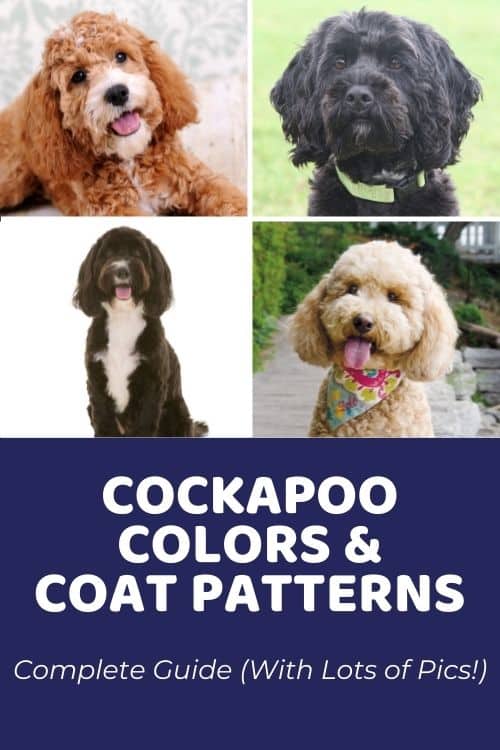

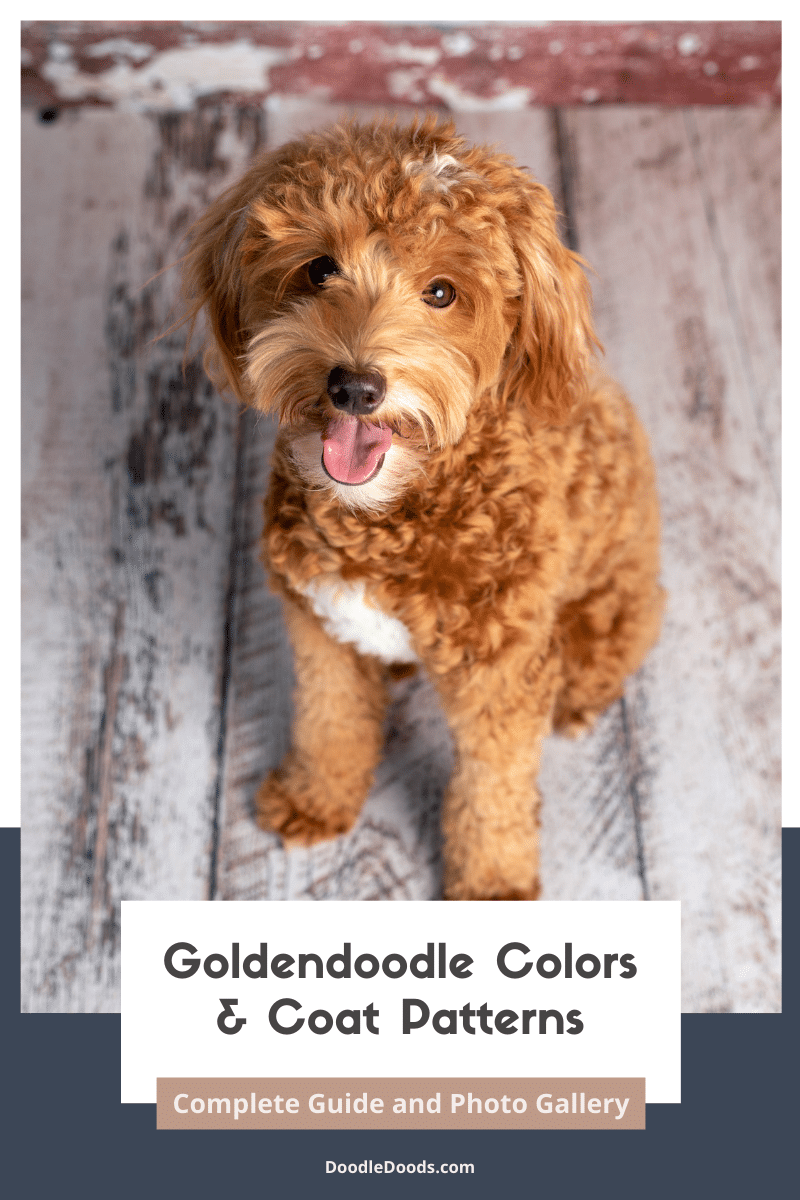

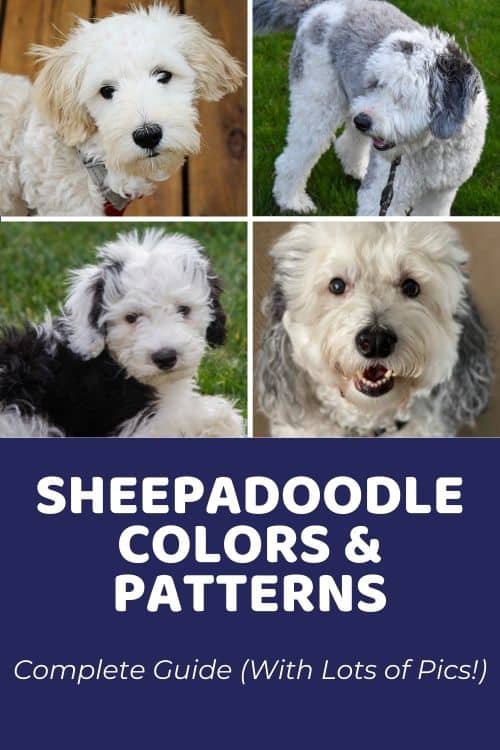

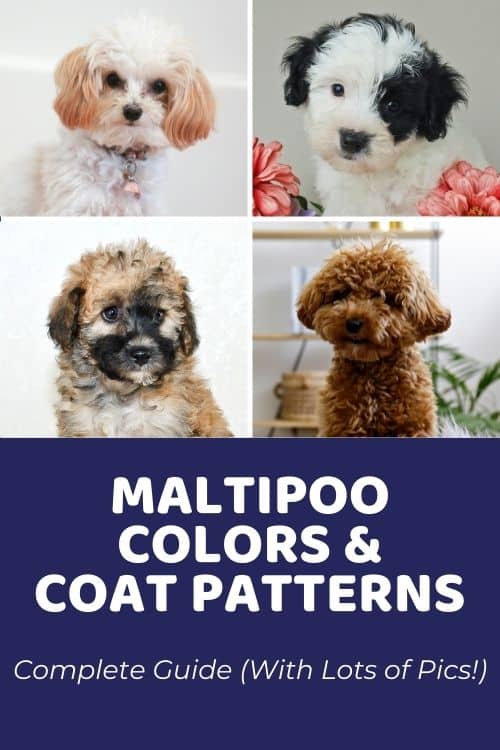
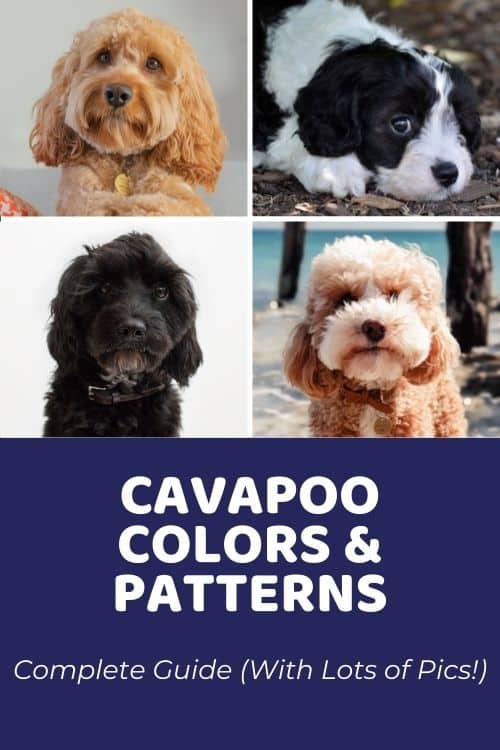

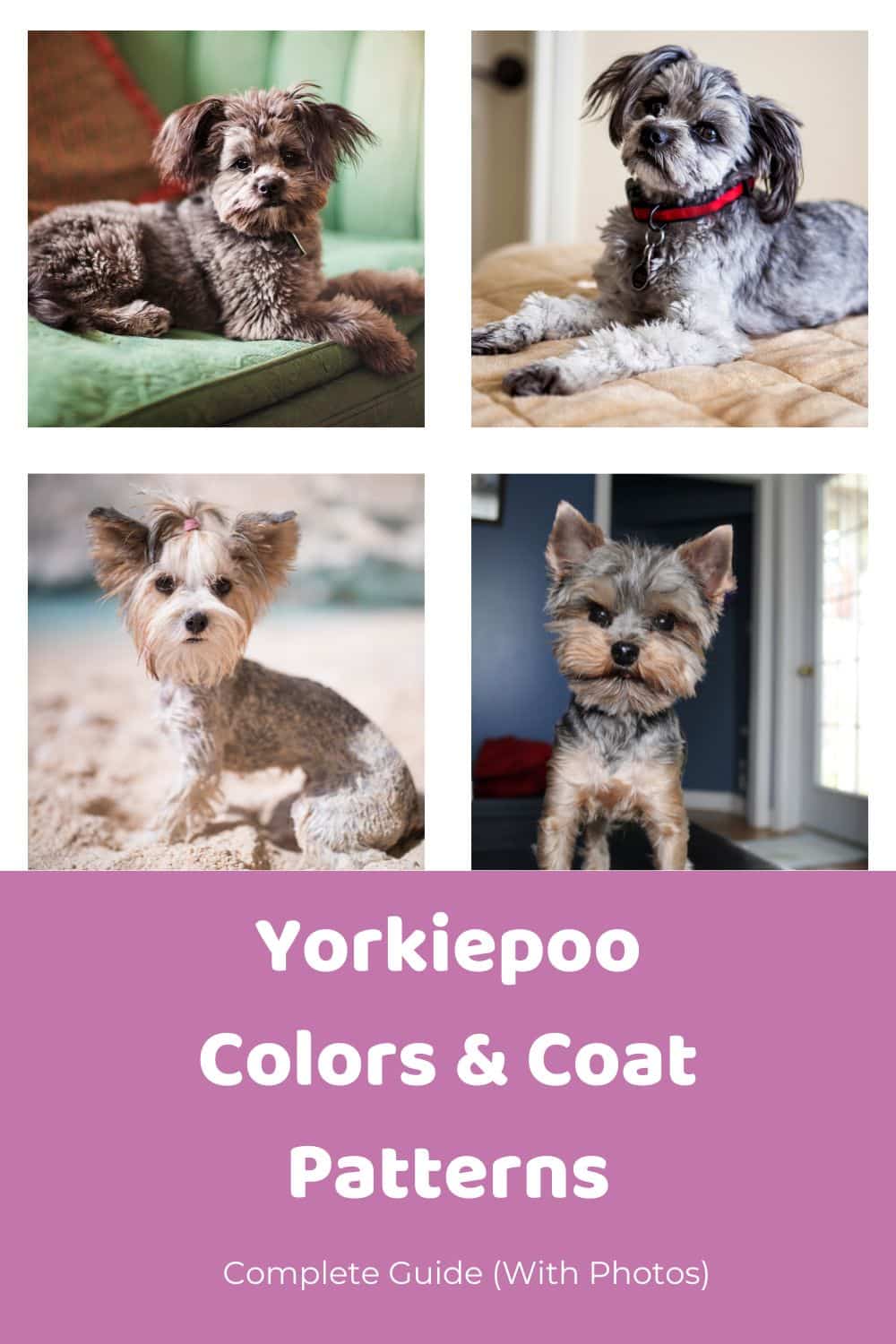
I have a phantom black and tan cockapoo puppy. She just had her first grooming and “lost” her tan eyebrows. I have been looking for signs of the tan coming back from the roots but don’t see any. I miss them! Is there still a chance?
September 22, 2022 at 1:02 pmAww! My *guess* is that they will come back and that the hair might just fade back into tan over time. Keep us posted!
September 22, 2022 at 1:08 pm